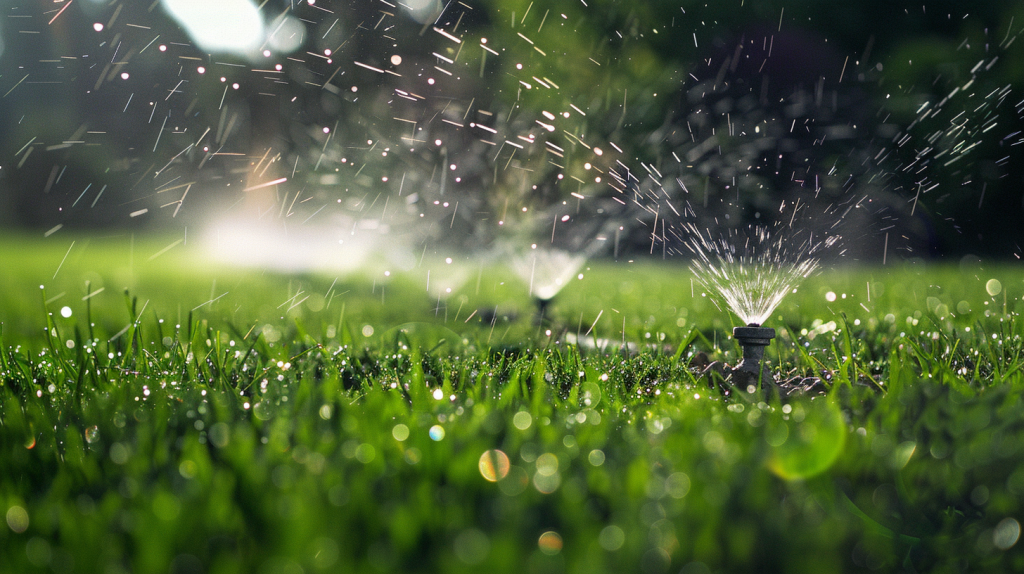Stormwater Attenuation Tanks | 32T Load Capacity
YD StormBreaker32®
Yude Rain Eco’s StormBreaker32® is an innovative geocellular underground rainwater management solutions designed for efficient stormwater attenuation, soakaway, infiltration, retention, detention and reuse. Engineered for versatility, it is suitable for a wide range of construction environments, whether used as a standalone solution or integrated into a Sustainable Drainage System (SuDS). With its robust, space-efficient design, Yude Rain Eco provides a reliable and sustainable solutions to managing surface rainwater, ensuring optimal performance across diverse building applications.
Ideal for urban park and light infrastructure designers.
Key benefits
- High Storage Capacity: Up to 95% storage rate, maximizing water retention for efficient stormwater management.
- Heavy Load Capacity: Can withstand up to 32T, suitable for residential neighborhoods, gardens, walkways, or small commercial spaces, parking spaces, low-traffic pedestrian areas, or small community centers.
- Durable & Long-lasting: Made from polypropylene, offering excellent corrosion resistance, UV stability, and impact resistance.
- Environmentally Friendly: Fully recyclable, supporting sustainable water management solutions.
- Customizable & Easy to Install: Modular design allows for flexible configurations and simple installation in various environments.
- Cost-effective: High performance and durability reduce long-term maintenance costs and improve system efficiency.
- Durability: Outstanding impact and abrasion resistance, with a service life of 50 years or more.

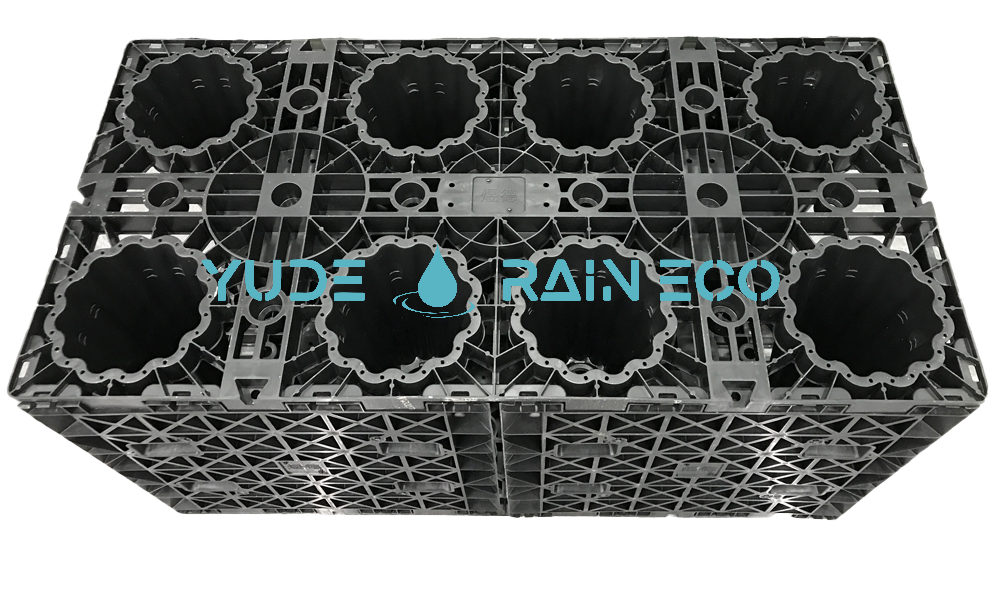

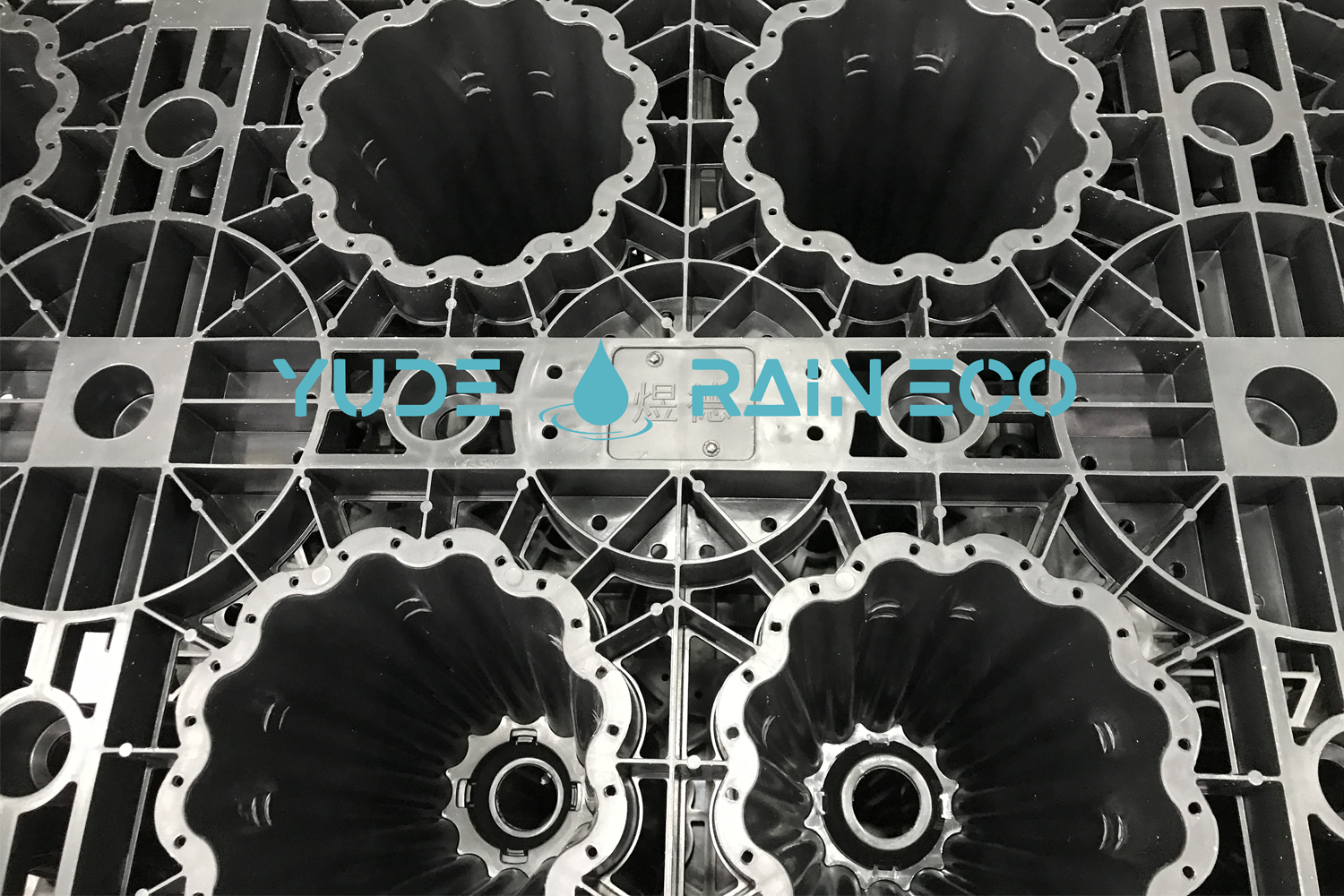

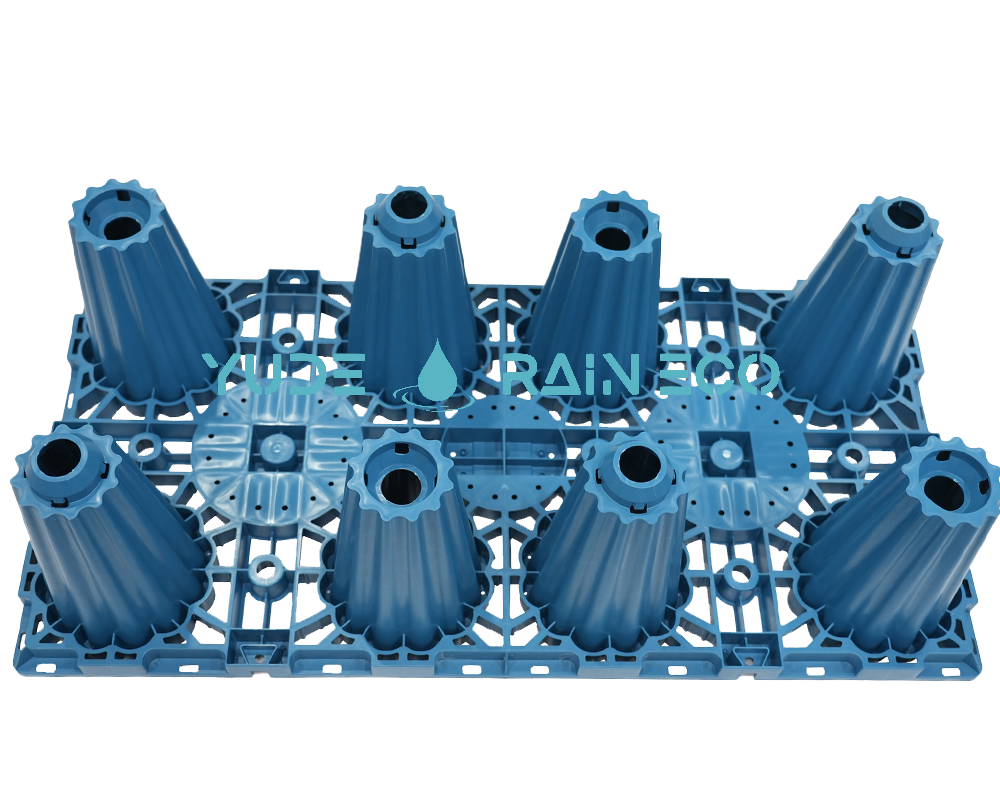
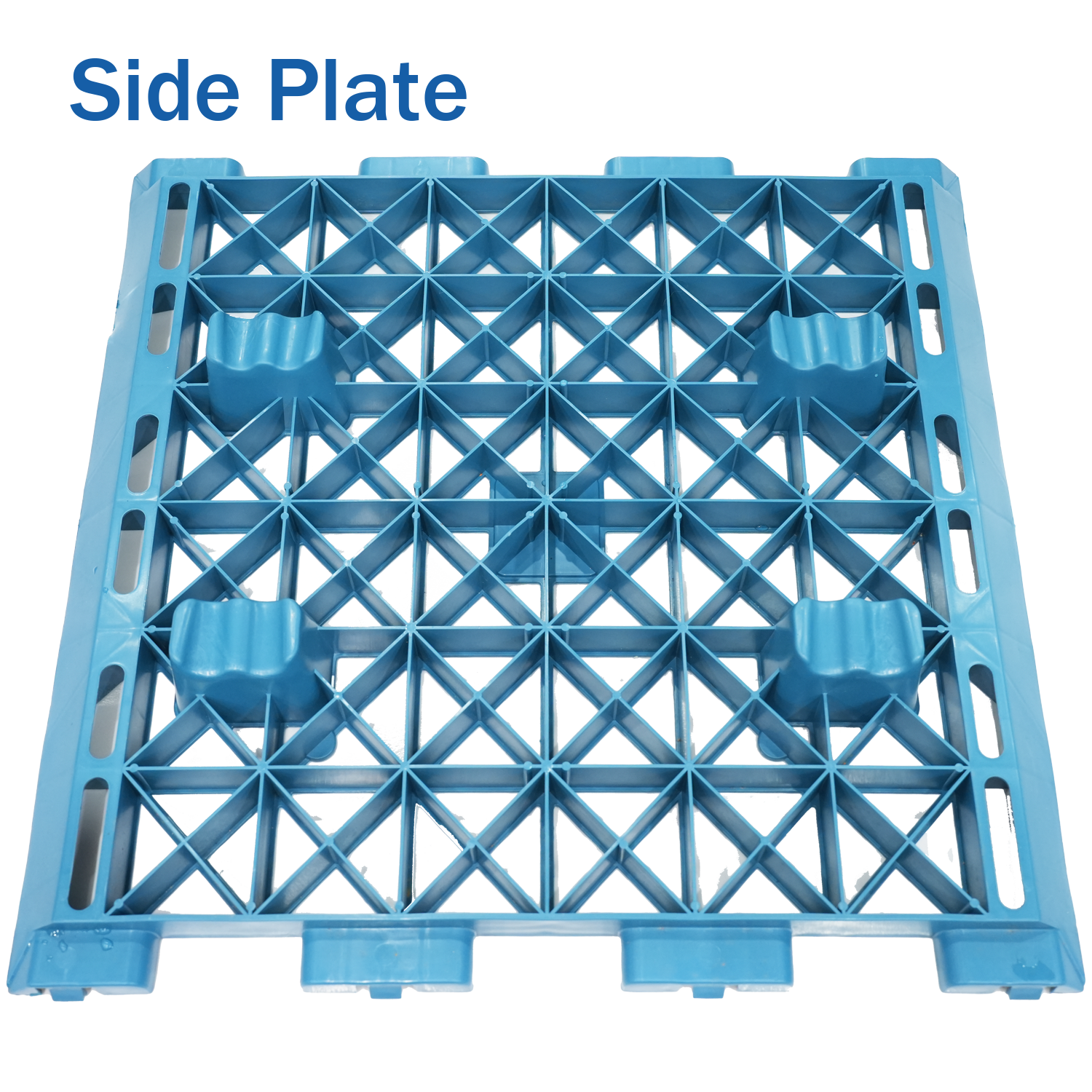
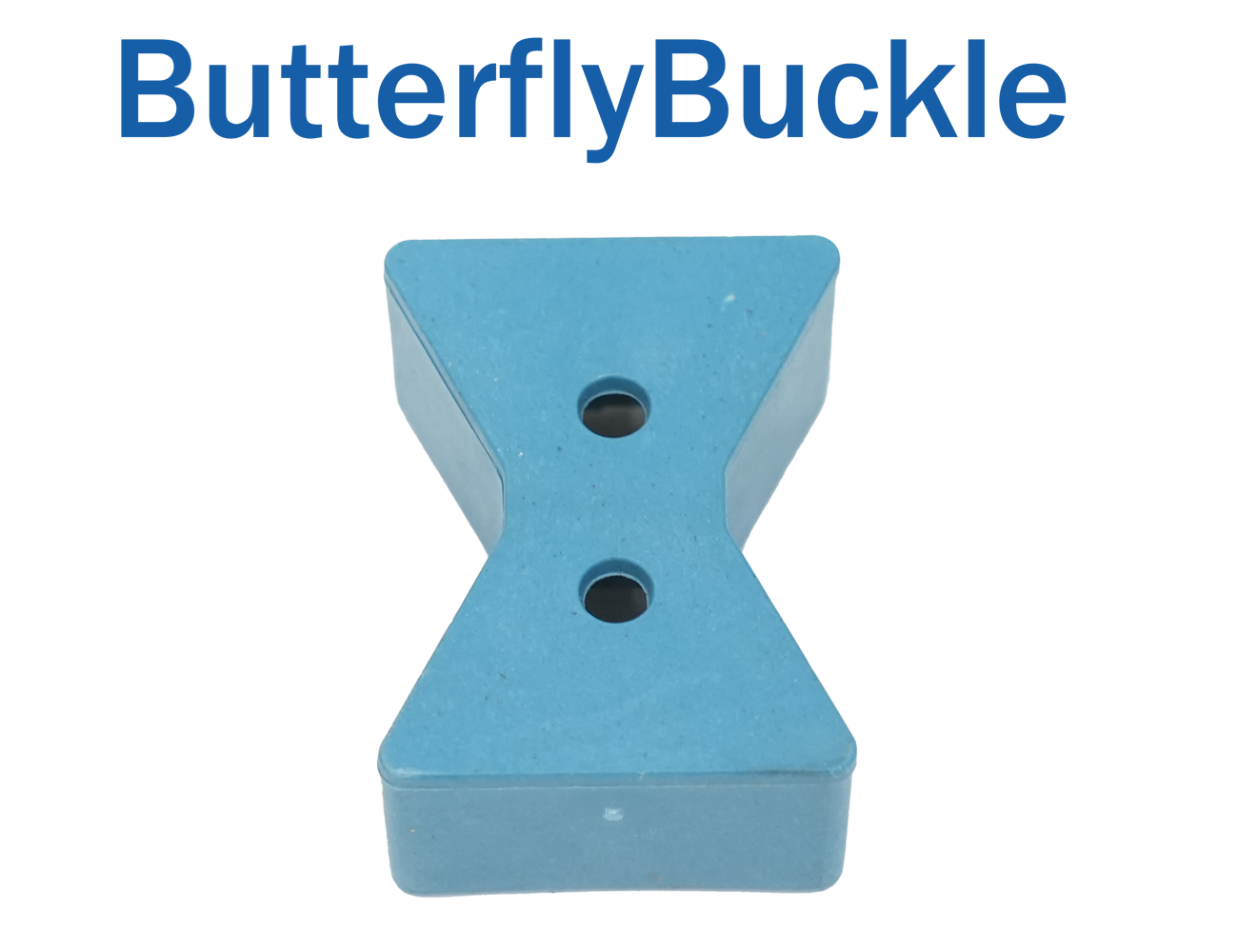
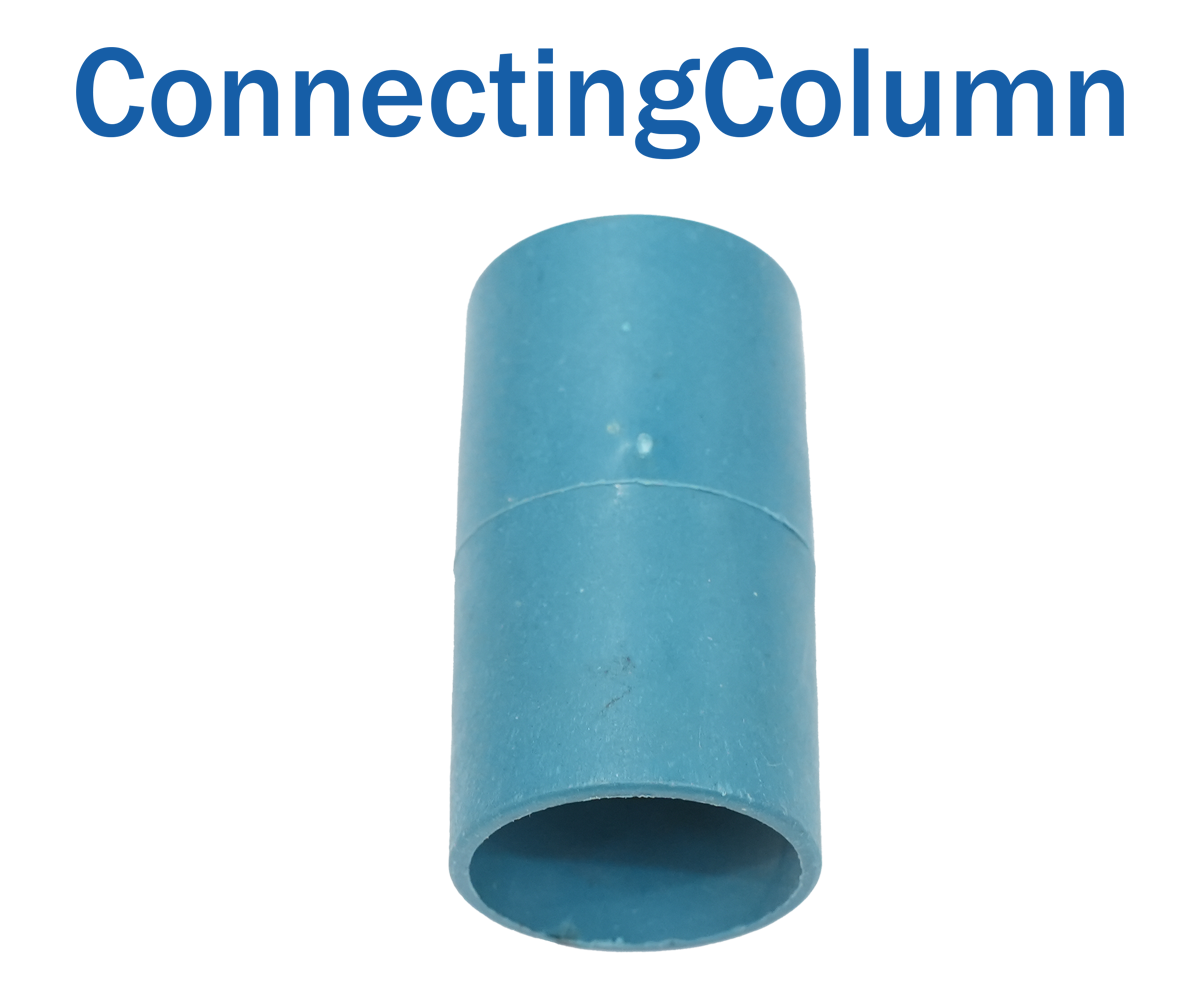



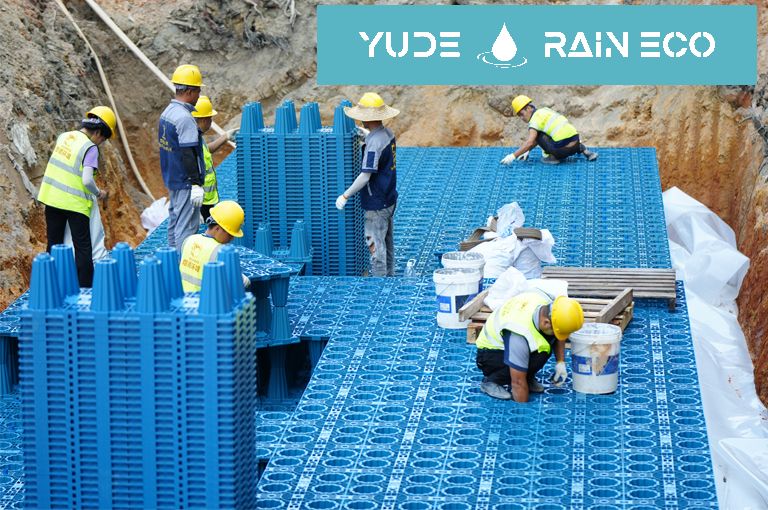
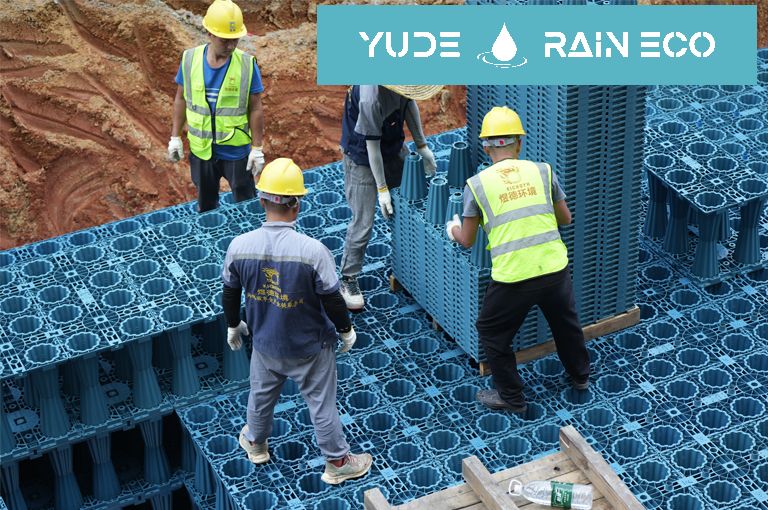
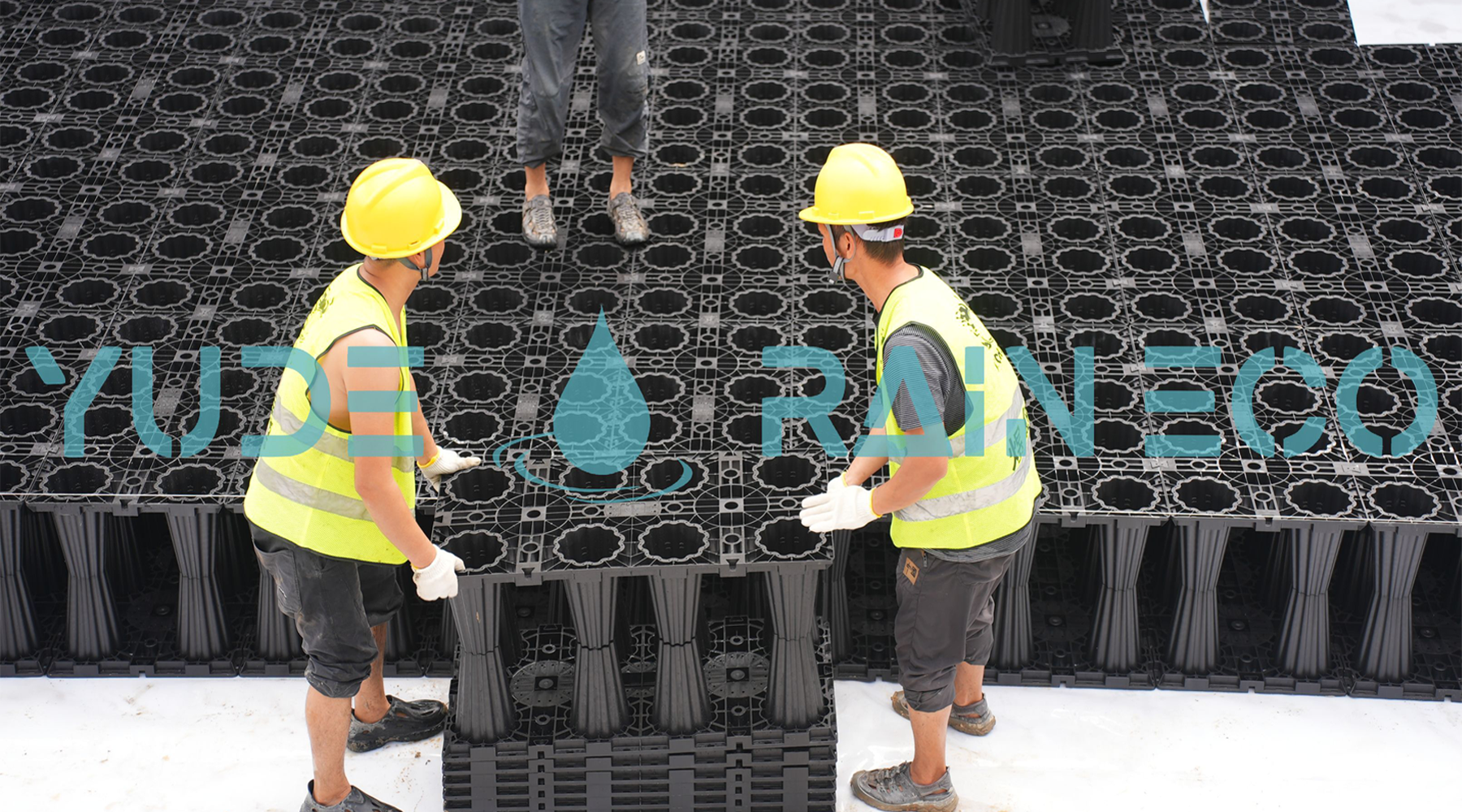
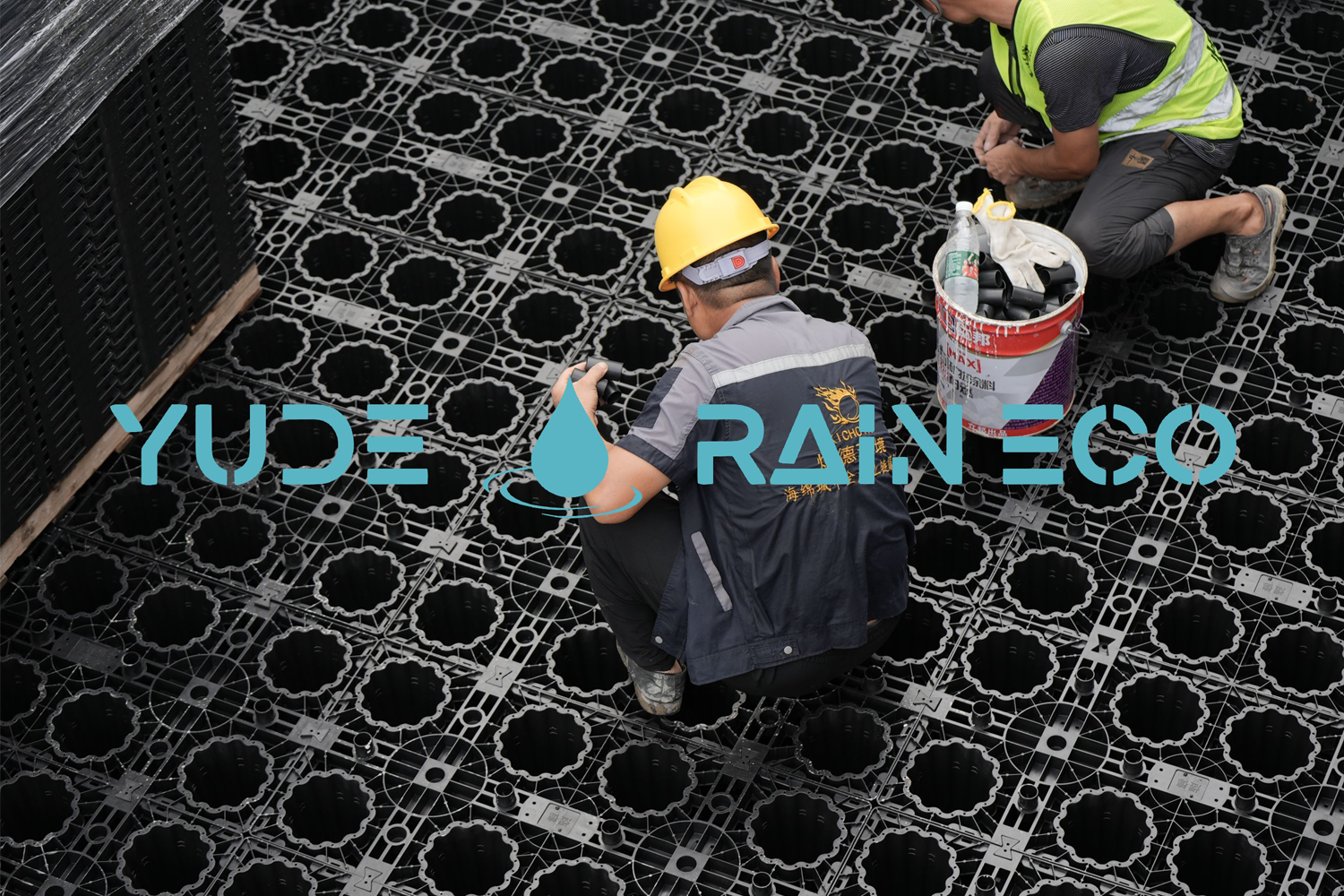

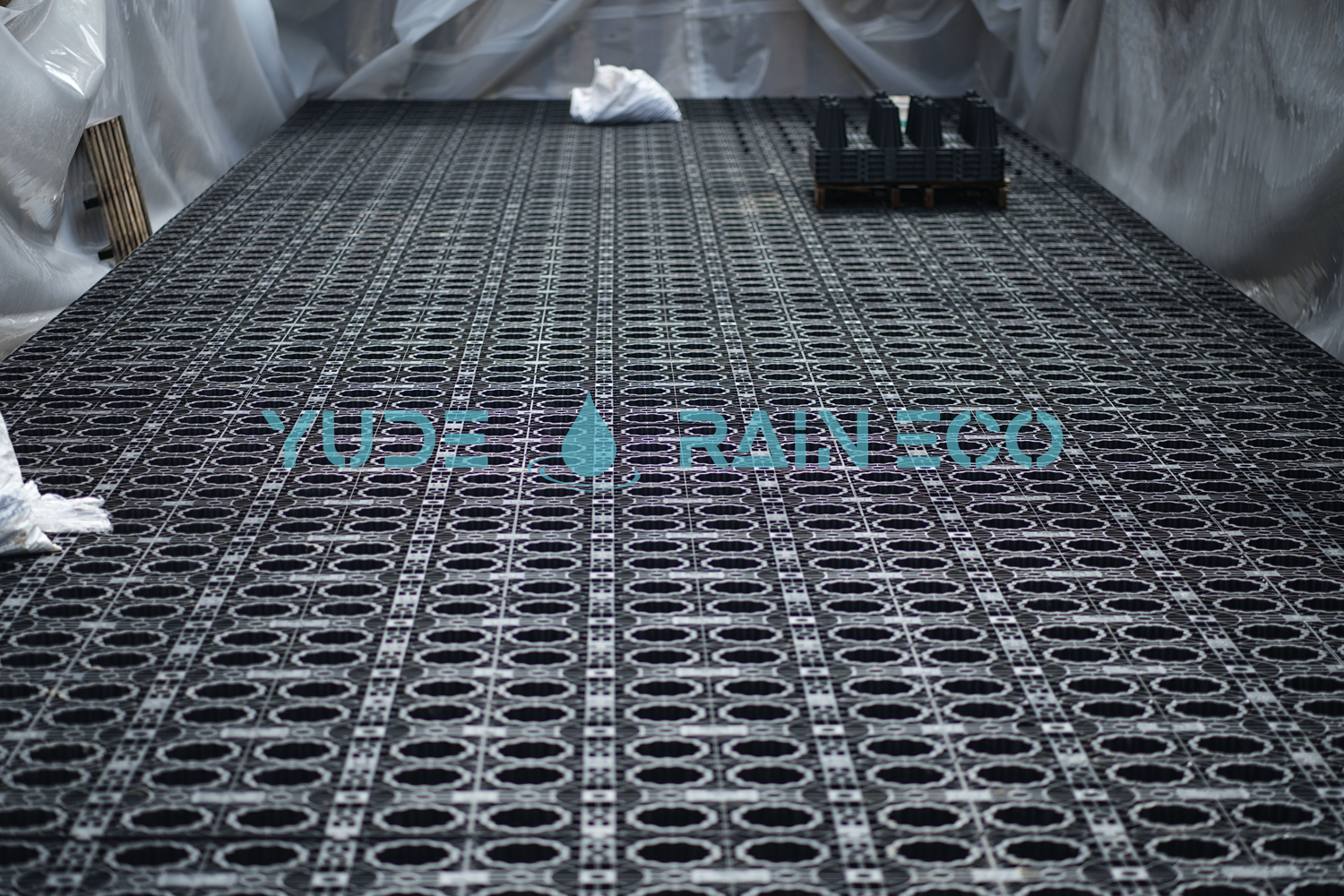
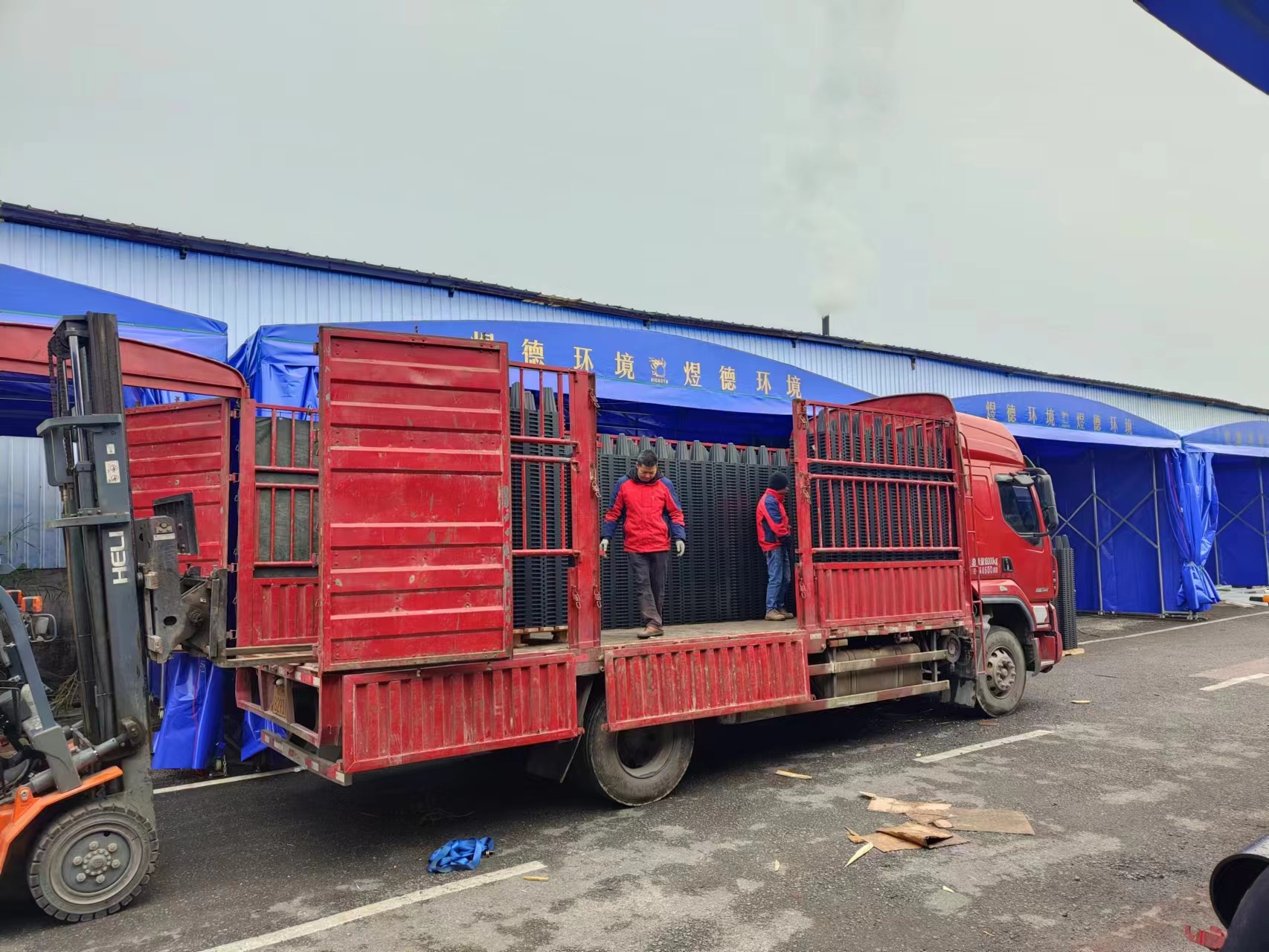
Product Name:YD StormBreaker32®
Product Size:1000*500*500(mm)/Unit
Material: Polypropylene
Product Color: Black, Blue
Product weight: 9.12kg/Unit
Load capacity: 1m³/Unit 32 Tons/㎡ (customizable)
Smart Inventory & Shipping
Ready-to-ship stock available for 100–500m³ orders
Standard delivery: within 7–20 working days
Export-ready with CO, CE, ISO test reports
Flat-packed to minimize transport cost
Applications of YD StormBreaker32®
Residential Parking Lots
For apartments and housing complexes with light vehicle traffic.Private Driveways
Suitable for personal homes and gated communities.Garden Areas & Green Spaces
For parks and landscaped areas with minimal vehicle use.Low-Traffic Public Walkways
Pedestrian paths in parks and quiet residential streets.Small Commercial Premises
For small businesses with low vehicle traffic.Low-Traffic Retail Parking
Parking areas for small shopping centers or local stores.Community Centers & Local Parks
For recreational facilities with moderate visitor traffic.
Why Choose YD StormBreaker32®?
Light-Duty, Cost-Effective, Space-Saving
YD StormBreaker32® is the optimal choice for projects where heavy load-bearing is not required, offering:
Best for green roofs, landscaping, pedestrian zones, courtyards, and recreational parks
Most affordable per cubic meter among the YD StormBreaker® range
Stackable design enables quick installation and space optimization
Perfect fit for SuDS and sustainable landscaping projects
| Model | Load Capacity | Suitable For | Relative Cost | Installation Ease |
|---|---|---|---|---|
| 32T | Pedestrian & light vehicles | Urban parks, walkways, gardens | ★★★★★ | ★★★★★ |
| 45T | Mid-load (small trucks) | Driveways, logistics centers | ★★★★☆ | ★★★★★ |
| 60T | Fire trucks, airport, emergency lanes | Highways, ports | ★★★☆☆ | ★★★★★ |
Need a solution that saves space and cost? YD StormBreaker32® is engineered for exactly that.
Product Specifications
Product Name & Specifications | Application Area | Advantages & Benefits | Maintenance Recommendations |
Product Name: YD StormBreaker32® | Residential Streets & Small Roads | Cost-Effective: Provides affordable stormwater management solutions for light-traffic areas. | Routine Inspection: Check for debris or compaction and ensure proper functionality. |
Product Size: 1000mm * 500mm * 500mm/unit | Small Commercial Areas | Lightweight & Space-Saving: Ideal for areas with lower load demands, conserving space and cost. | Prevent Compaction: Ensure that backfill material remains uncompacted to allow proper drainage. |
Material: Polypropylene | Public Parks & Green Spaces | Sustainable: Eco-friendly design for urban green spaces, contributing to better stormwater management. | Surface Wear Inspection: Check for erosion around the surrounding soil and backfill material. |
Color: Black, Blue (Customizable) | Low-Traffic Parking Lots | Space-Efficient: Provides stormwater attenuation in confined spaces with minimal excavation. | Check for Blockages: Ensure that water flows freely through the system by checking for blockages in the inlet/outlet areas. |
Weight: 9.12kg/unit | Suburban Drainage Systems | Durable & Long-Lasting: Can last over 50 years with minimal maintenance. | Backfill Material Check: Ensure the backfill is not compacted and retains permeability. |
Load Capacity: 32T per m² (Customizable) | School & Public Buildings | Affordable Solution: Cost-effective while providing efficient stormwater attenuation for low-demand areas. | Regular Inspections: Inspect for signs of damage and ensure proper functionality after extreme weather events. |
|
| High Storage Efficiency: Up to 95% storage capacity, providing excellent stormwater retention. | Routine Inspection Quarterly: Check for debris or compaction and ensure proper functionality. Prevent Compaction Annually: Ensure that backfill material remains uncompacted to allow proper drainage. |
|
| Eco-friendly: Fully recyclable material supports sustainable water management. | Surface Wear Inspection Semi-Annually: Check for erosion around the surrounding soil and backfill material. Blockage Check After Heavy Rain: Ensure that water flows freely through the system by checking for blockages in the inlet/outlet areas. |
Installation steps
1. Site Preparation
Survey the Site: Conduct a site survey to assess the conditions (e.g., soil type, water table, traffic load) and determine the optimal installation location.
Excavation: Excavate the ground to the required depth and size to accommodate the modules. The trench should be wide enough to allow for proper installation and water flow.
Level the Base: Ensure the base of the trench is level and compacted to provide a stable foundation for the modules.
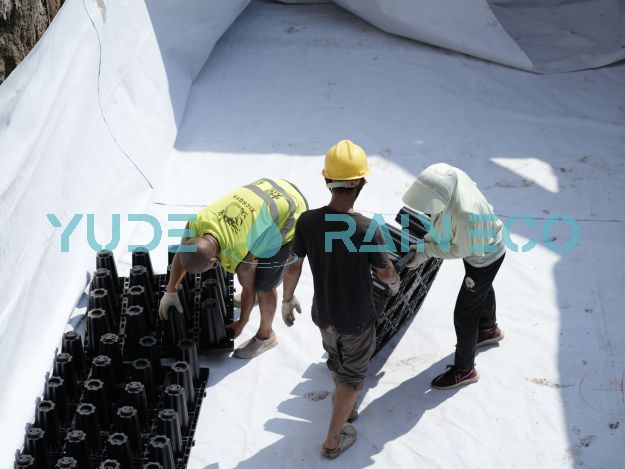
2. Foundation and Bedding Layer
- Install Bedding Material: Lay a bedding layer (usually crushed stone or gravel) at the bottom of the trench. This ensures proper drainage and provides support for the modules.
- Compact the Bedding: Compact the bedding material to create a firm base for the modules, ensuring a stable, uniform surface.
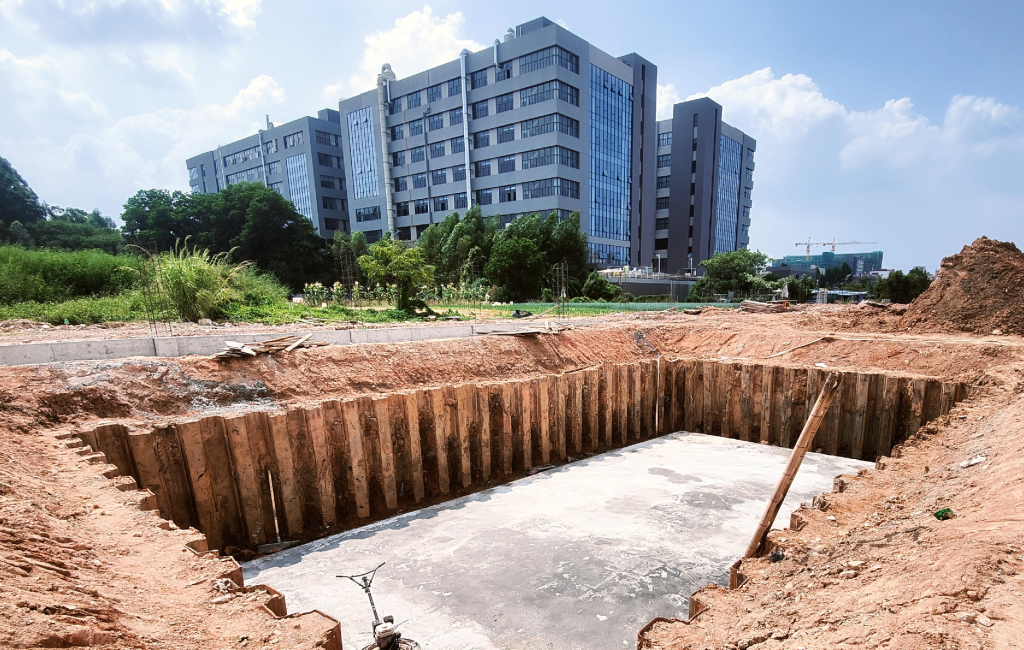
3. Stormwater Attenuation Tanks Placement
- Position Attenuation Tanks: Carefully place the YD StormBreaker32® attenuation tanks into the trench. Ensure that the tanks are aligned properly and the connectors (if applicable) are facing the correct direction.
- Stacking (if applicable): If stacking is required, ensure that the rainwater attenuation tanks are stacked in a stable and secure manner, following the Yude Rain Eco’s guidelines.

4. Stormwater Attenuation Tanks Connection
- Connect Stormwater Attenuation Tanks: Depending on the system design, connect the Stormwater Attenuation Tanks using interlocking mechanisms or connectors to ensure the system is secure and watertight.
- Connect to Drainage System: Link the Stormwater Attenuation Tanks to the surrounding stormwater drainage system, ensuring proper inlet and outlet connections for water flow.
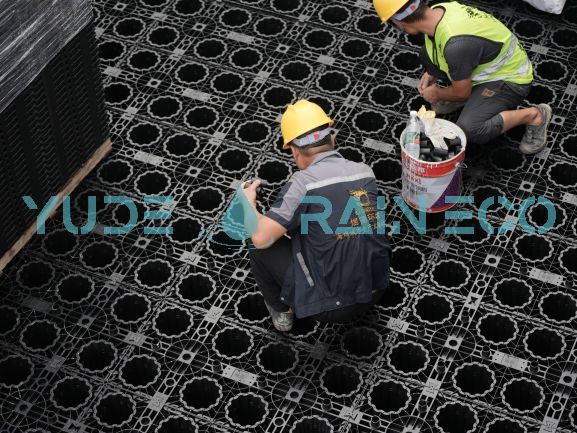
5. Backfilling
- Backfill Around Tanks: Once the tanks are in place and connected, backfill the trench with appropriate material (e.g., gravel or sand) around the tanks. Avoid using materials that could cause compaction or block water flow.
- Compact the Backfill: Gently compact the backfill to ensure stability without damaging the tanks.
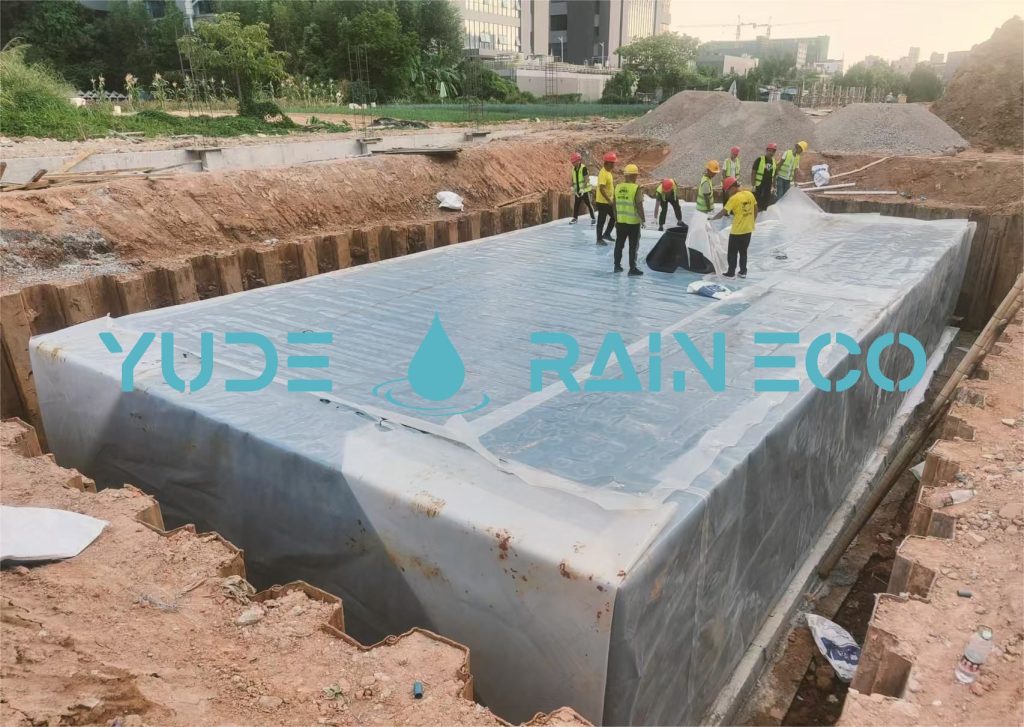
6. Installation of Surface Layer
- Reinforce Surface: Install a surface layer (e.g., asphalt or concrete) above the stormwater attenuation tank system, depending on the application (e.g., road, parking lot, or green space).
- Ensure Proper Drainage: Make sure that the surface layer allows for proper water drainage into the tanks. This is particularly important for areas like roads or parking lots.

7. Final Inspection & System Testing
- Inspect Alignment & Connections: Ensure all tanks are properly aligned, with secure connections and no gaps.
- Test the System: Simulate rainfall or runoff to verify water flows correctly through the tanks, checking for any leaks, blockages, or drainage issues.

8. Maintenance and Monitoring
- Establish Maintenance Schedule: Set up a regular inspection and cleaning schedule to ensure the system continues to function optimally.
- Monitor for Damage or Blockages: Check the system periodically for signs of damage or blockages and address any issues promptly.
Working Principle
Certificates
- Long Term Creep Test
- Short Term Test
- Deflection Test
- CE certificate
- ISO 19001
- ISO 45001
- ISO 14025
- ISO 24001
For full certification documents or technical test reports, please contact our expert team.
FAQ
Stormwater attenuation tanks is a specially designed system used to capture, store, and manage rainwater runoff. It helps to prevent flooding by controlling how water is drained away from urban and industrial areas.
Stormwater attenuation tanks help manage rainwater effectively in cities, parking lots, roads, and other areas with a lot of concrete. They prevent flooding, reduce water pollution, and help conserve water for future use.
Stormwater modules significantly reduce the risk of flooding in urban areas by capturing and retaining excess rainwater, preventing surface runoff from overwhelming drainage systems. YD StormBreaker32® modules provide efficient flood prevention through detention, retention, and infiltration, especially in high-density urban environments where traditional drainage systems may be inadequate.
Yes, the YD StormBreaker32® module is designed for detention, retention, and infiltration of stormwater, allowing for efficient water management and reducing the risk of flooding in developed areas.
The YD StormBreaker32® module stands out due to its high load capacity, compact design, long lifespan, eco-friendly materials, and flexible installation, providing a reliable and efficient solution for managing stormwater in urban and industrial applications.
Yes, stormwater modules can be designed or adapted to meet specific requirements, such as adjusting the storage capacity, load-bearing capabilities, or installation configurations based on project needs.
Curious about how stormwater attenuas tanks can save you money in the long run?
Contact us to inquire about Yude Rain Eco’s stormwater management solutions and the benefits of YD StormBreaker32®.
Ready to save on water costs with rainwater harvesting solutions?
Talk to Yude Rain Eco about customized rainwater harvesting and stormwater management systems designed for your project.
Yude Rain Eco specializes in engineering smart, sustainable solutions for rainwater harvesting, stormwater attenuation, and siphonic drainage. Our expert team provides end-to-end support — from system design and compliance consulting to installation guidance — ensuring your project runs smoothly from start to finish.
- Mobile: +86 400-888-2852
- Email: [email protected]
- Email: [email protected]
- Room-302A-02, No.1 Wisdom Road, Zhangcher Street, Chancheng District, Foshan, China
| Sitemap

